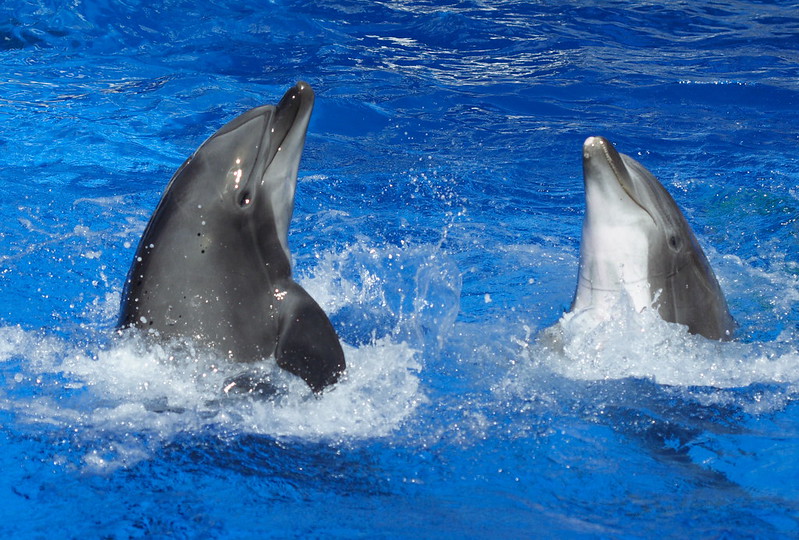
In a recent study, scientists explored how bottlenose dolphins respond to electric fields. They discovered that some dolphins can detect really faint electric fields as weak as 2.4 microvolts per centimeter. This ability is even more remarkable than that of platypuses.
While dolphins aren’t as skilled as sharks and rays in this area, this finding provides evidence that being able to sense electric fields might be more crucial for dolphins’ survival than previously thought.
Dolphins have little pits full of nerve endings on their faces, called vibrissal crypts. A study from 2022 confirmed that these pits help them sense weak electric fields, but it is uncertain how weak these can be.
It’s logical for creatures in muddy rivers or estuaries to find other ways to see underwater, but for dolphins in clear waters, having this skill might seem unnecessary. Nonetheless, even in their often clear waters, it appears that bottlenose dolphins find electrosensitivity quite handy, and they’ve held onto this ability to a significant extent, as reported by IFL Science.
Use of two trained female dolphins to test seventh sense
Dolphins pose a challenge as study subjects, but Dr. Tim Hüttner and his team from the University of Rostock took on the task. They tested two female dolphins, Dolly and Donna, at Nuremberg Zoo. The dolphins live in a habitat with nine pools, providing ample space to separate them from each other and the rest of the pod.
Every day, each dolphin stuck its nose into a headpiece with two electrodes that could create weak electric fields in the water around them.
🐬🌊 Bottlenose dolphins have a 'seventh sense'⁉️Scientists discover they can detect electric fields, aiding in hunting fish hidden in the sea's depths. This remarkable ability stems from their snouts, enhancing their already amazing aquatic skills!🌊 pic.twitter.com/QP9TJ5PDLm
— Intuition (@intuition_co) December 4, 2023
Dolly and Donna were taught, using fish rewards, to leave the station when they sensed an electric field and to stay put when they didn’t. The experiment began with a field strength of 500 µV cm−1, gradually decreasing over time. To put this into perspective, platypuses, the first mammals found to be electrosensitive, can sense fields of 25–50 µV cm−1, as reported by IFL Science.
However, dolphins outperformed this. Starting with an impressive 96 percent success rate at the initial field strength, their performance slightly dipped at lower fields but remained significantly better than mere chance.
Dolly, one of the dolphins, hit a performance plateau at 5.5 µV cm−1 and lost interest in continuing below that level. On the other hand, Donna demonstrated greater sensitivity, detecting fields as low as 2.4 µV cm−1 and performing well.
Predators can hunt using electric fields
Both dolphins showed less skill in detecting alternating current (AC) fields. They needed field strengths up to ten times higher at 1 Hz, and they struggled even more at higher frequencies.
The authors highlight that weak bioelectric fields are a reliable source of close-range information for passive electroreceptive animals. All living beings create electric direct current (DC) fields in the water, generated by ion flow from fish or crustaceans. These fields are influenced by low-frequency AC potential from muscle activity.
Predators can effectively hunt using these fields, especially when their other senses are blocked, as reported by IFL Science.
See all the latest news from Greece and the world at Greekreporter.com. Contact our newsroom to report an update or send your story, photos and videos. Follow GR on Google News and subscribe here to our daily email!



